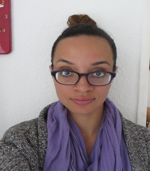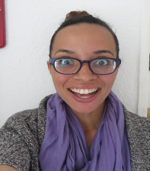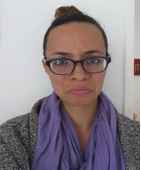The Democratization of Expression
- Justice Adda

- Jul 22, 2015
- 12 min read
The Importance of Non-cognitive Skill-building in the Multilingual Classroom'
By Crystal Boyd

With an ever globalized world, the efficient dispersal of language to a diverse, multilingual student population is now a prerequisite for the modern teacher.
BACKGROUND AND CONTEXT
The world is seeing the largest migration of refugees and asylum-seekers since World War II. Civil wars, political strife, and genocide all contribute to large numbers of Syrian, Eritrean, Ukrainian, and Libyan citizens braving the dangerous Mediterranean waters in order to get to Europe. The results are vast numbers of displaced persons in Europe and Turkey, with children and women composing a majority of the new population. Turkey accepted over half a million asylum-seekers in 2014, and the EU accepted a record high number of 626,000 asylum-seekers in 2014 [1].
There are of course other populations of citizens worldwide who speak a different mother-language at home than the national language. Many families have little exposure to their country's national language, or relocate elsewhere for better financial prospects and freedoms. No matter the reason, the multilingual classroom is now becoming the norm, not the exception. The classroom must adjust to these new exciting opportunities to learn and share various languages and cultures.
WHY TEACHING FOR A MULTILINGUAL POPULATION IS IMPORTANT
Regarding the current crisis of large-scale unrest and migration, there are many economic, security, and humanitarian benefits to educating the child population of asylum-seekers in their new countries. The economy will benefit from having a literate and fluent group of young adults for daily interaction in the workforce; these children bring assets of perseverance, hard-work, and appreciation for opportunities not afforded to them in their home-countries. Education is an important national security measure, as integration into the new country will stabilize a group that could grow agitated and restless if segregated as an underclass within society. In a world with new forms of internal terror threats and agitation, it is vital that countries do not alienate and malign entire segments of their society. Children are often the cultural translators between their parents and their new country, with literacy being a guiding force in grounding the new community in their surroundings. There are also child protection laws and humanitarian reasons to provide safety and opportunity for the most vulnerable of children, surviving death, violence, and severely traumatic events, including the 12,225 of those children detached from their families in the throes of war [2].
OBJECTIVES OF THE WORKSHOP
The objective of the “Democratization of Expression: Non-Cognitive Skill Building in the Multilingual Classroom” Workshop, is to create equal and inclusive classrooms in a multilingual world.
The take-home lessons of this workshop is teacher engagement in new pedagogy of “1) orienting” the students they serve and 2) creating a “safe space” through the use of non-cognitive activities. For the student new to a language, classroom structure, or for some asylum-seekers the idea of school itself, it is important that the teacher establish the norms of the classroom and orient the entire class to the larger pillars of the society. These pillars range from the government structure (ie: explaining democracy, voting), the interaction between gender groups (men and women learning together), and the benefits of education (college, literacy, workforce access). Context and relevance to the students are key. Nothing should be taken for granted. Many students have persevered despite irregular schooling, lack of educational opportunity for some of the girls, and chaotic situations in their home country; school is the stabilizing force in an otherwise unstructured life. That being said, every student from a multilingual background brings a unique set of skills and stories; some may have highly-educated and professionally-skilled parents, while others may have no parents at all. A pre-assessment of the child's strengths and needs, both linguistically and socially, is essential in serving them as a teacher. The challenge of orienting one's class to the specific country's “way of life” can be extremely rewarding for the teacher, as it builds a sense of community and intimacy with the students outside of the daily curriculum.
What do we mean by “safe space”? A safe space is a place that promotes child and youth well-being. According to the International Rescue Committee, teachers play a positive role in making and maintaining “healing” learning spaces, particularly in crises, in which all children can recover, grow, and develop. A “safe space” is a space where teachers can strengthen students’ sense of control, sense of belonging, feelings of self worth, positive peer and teacher relationships, and intellectual stimulation, all of which contribute to students’ overall well-being [3].
METHODOLOGY
What is Non-Cognitive Skill-Building?
Non-cognitive skill-building taps into a vital creative and pedagogical learning regardless of a student's literacy or national language level. Skills such as confidence, self-trust, communication, conflict resolution, learning how to learn, and teamwork build up trust and structure within the classroom, as well as instill self-confidence in the students regarding their ability to engage and communicate. As the saying goes, “Teach a child to fish, and you will feed them for a lifetime.” In this case, the how is just as important as the why. Utilize the universal ways of communication to communicate a new language, and literacy will be sure to follow.
What are Tools for a Non-Cognitive Skill-building Approach?
Tools such as Visual cues, Audio repetition, Body language, and varying Group vs. Individual/Paired learning structure are proven ways to teach children language quickly while still retaining more information. Connecting learning to both the brain and the body traces back to human infancy, where learning is absorbed through imitation, physical repetition, and digesting visual cues. New studies show that holistic learning of brain and body through a non-cognitive pedagogy increases retention and focus in the classroom.
PARTICULARS OF THE WORKSHOP: SIZE OF GROUP, AGE GROUP, RAW MATERIALS, SCHEDULE
Here are some concrete exercises that build non-cognitive skills and strengthen safety, intimacy, and communication in the classroom. The ideal number of participants for these activities ranges from 15-20 students. For the purpose of this workshop, we will focus on the critical age for language and literacy comprehension, between 5-7 years old. A great thing to note is that these exercises can be used from age 3-14, as visual cues and audio/visual comprehension are skills that people of any age can strengthen. One large empty room, with chairs (one for every student) situated in a large circle, is the ideal space for the workshop. The workshop should run from 9:30 am to 1:30 pm, with an hour included for lunch and a play-break.
Raw Materials Needed: A large flipchart or Electronic smartboard), markers, 20 notecards, 50 sheets of paper, 20 pencils, a laminated “Detective” magnifying glass, a paper moustache attached to a thin wooden stick.
WORKSHOP
These exercises were adapted and tested within the Berlin School system within grades 1-6, including students of migrant and refugee backgrounds.
*Before beginning the workshop, ask the students to remove their shoes and set up clear expectations for where bags and shoes belong in the room. Leave 5 minutes for all students to go to the bathroom, and when they are ready have them join you sitting in the large circle in the room.
· Mantra/Poem or Song Dictation (Group Warm-Up, 20 minutes)- WHY THIS GAME: A group warm-up, involving repetition from teacher to student, sets the creative pace and high-energy tone for the day. It will shake up the typical classroom structure both spatially and content-wise, which will jar the students to attention. Breaking the students' into 'performance groups' at the end and giving them a task (ie: recite one line each from this poem, with one line recited together and one group move at the conclusion) will shift the focus from teacher entirely to student. A 'safe space' is key to the students feeling comfortable with trying new things, asking questions, and failing. The teacher can create a safe space in their classroom with the heavy use of class rituals, order, and structure. This is a great starting activity to begin the day as a community and establish the teacher-student dynamic.
MATERIALS: N/a. Start the day with the repetition of a 45-second beautiful, moving song or poem (pick your favorite song or chant)! Older kids especially love tongue-twisters. Sing or state one line at a time, and then point to the students to repeat. Try to lead this activity without speaking, with just your hands guiding the flow of leader vs. the repetition of the group. The students will be excited by the challenge and memorize the piece without even realizing it! Lean a little at a time and at the end, ask them to perform that bit alone, without you. You can play with different tones and speeds as well (ie: chipmunk fast, turtle slow, etc)
· Mask On, Mask Off (Group Activity, 10 minutes)- WHY THIS GAME: This activity taps into the students' strength of communication through their own physicality, irrespective of their familiarity with the national language. It creates a safe space to engage with new vocabulary and teaches them how to rely on visual cues and context to pick up new words, even outside of the classroom. Finally, giving the students the opportunity to be 'the expert' in teaching their mother language in the classroom will stress equality of backgrounds and boost student self-confidence. This activity follows the Mantra Dictation to further emphasize learning based off of repetition, memorization, and listening to the teacher.
MATERIALS: N/a. Examine Emotions and communicate new vocabulary (ie: verbs) of the national language by explaining terms through body movement. Begin with the “emotions” vocabulary, first explaining 'neutral' (a blank slate, no emotion) through body language and then adding layered facial/body expressions for a particular emotion (angry, happy, jealous, surprised, confused, terrified, etc). The teacher will say, “Mask On: _Happy_” while the students freeze in that position until the teacher gives them the release cue with, “Mask Off.” Expand upon this activity to include the mother language of the students in the room- have them teach an emotion in their language by showing it first and then second, saying the word in their mother tongue, followed by the word in the national language. Have the class repeat after the student teacher.
· Detective (Group Activity, 20 minutes) WHY THIS GAME: It highlights Teamwork above all, Group Accomplishment, Establishing Community, and Tapping into the natural assets and even playing-field of Body Language. This activity follows “Mask On, Mask Off,” to slowly transition towards the children controlling the activity and troubleshooting without the teacher to problem-solve.
MATERIALS: Open space in room or outside for a large circle, a prop magnifying glass and/or moustache attached to a stick for the “Detective” to hold. -The class forms a circle and they make movements together, slowly, from the waist up. Then, one girl or boy becomes the Detective and goes outside while one Leader is selected inside discreetly. The Detective comes back in and it is their job to figure out who is leading the group movements in three guesses- the key is teamwork, and body coordination to outsmart the Detective! After ea ch Detective Round, the teacher should ask the students what they did well to outsmart the Detective and what they can improve to win for the next time (ie: the group collectively uses eye-contact on a 'fake' Leader to trick the Detective into guessing the wrong person).
· Focus on the Floor, Focus on the Ceiling (Attention Exercise, 2 minutes) -WHY THIS ACTIVITY: Listening skills, basic vocabulary regarding directions and areas of the classroom, reinforcement of rules and quiet in the classroom. This can follow any activity, and should be used as much as possible to establish consistency in the classroom.
MATERIALS: n/a. -If the class is being noisy, focus them with pointing your finger to the Floor and saying, 'If you can hear me, Focus on the Floor,' repeat with the door, the teacher, a student, a teacher assistant., etc. THEN, after 3 or 4 times, switch the focus so that what you say and where you point do not match. It is important for the students to focus on what you say and not where you point! They will love it.
· Head, Shoulders, Knees, and Toes (Group Song/Movement, 10 minutes): WHY THIS GAME: Many children have a version of this song in their mother-language, which makes for relative ease in understanding the purpose of the song- to learn body parts! It incorporates group learning and strong use of visual cues, as well reinforcing the use of music and repetition from the “Mantra Dictation” at the top of the workshop.
MATERIALS: n/a. Classic song skills that incorporate body parts language building as well as movement! Point to the various body parts as you sing them in the national language. Ask the children to do it alone at the end, and also ask them where are certain body parts to see if they've been paying attention.
11 AM-12 PM---30 MINUTE LUNCH BREAK, 30 MINUTE OUTSIDE PLAY BREAK- building in lunch and a break from the work is crucial. The students need to time to absorb and the time off will refocus them upon their return.
· Mantra/Poem or Song Dictation (Repetition of Group Warm-Up, 5 minutes)- WHY THIS GAME: Reptition of the group warm-up in a large circle will refocus the group and reinforce the structure of circle learning from the morning activities. This time, only repeat the poem from teacher to student, and then recite it twice through together and different dynamics (very quiet, very loud).
· Syllabic/Sentence Structure Breakdown (Group Activity, 30 minutes) WHY THIS ACTIVITY: This activity fuses typical content learning with a non-cognitive approach. It grounds literacy skills and necessary syllabic breakdown with physical engagement, competition, and individual strategy- all definite ways to peak student-interest and learn from an individual's mistakes. Remind the class that “you can learn a great deal from observing others and their breakthroughs and struggles.” If the class' attention strays, incorporate competition of two students taking turns to complete the activity with the least mistakes.
MATERIALS: An electronic Smartboard or a large chartboard with paper, magic markers FOR 1 and 2nd GRADE: -On a chartboard, draw 10 images on the righthand side (ie: an apartment, flowers, a cake, an apple, a frog, an airplane, etc). Each image should be a two-part syllabic word (auf Deutsch: ku-chen, blu-men, ap-fel, frö- sche, woh-nung, flug-zeug, z.B.). On the left hand side of the chart, draw two columns- in each column, write the first and second syllable for the 10 vocab words, out of order from the images. Then, ask a volunteer to read the first syllable in the first column and find it's matching second syllable in the second column, so that the resulting word matches one of the images in the third column. Go down the list with different volunteers. FOR 3-6th GRADE: On the floor, align three different complex sentences and ask volunteers to 1) read the different sentences out loud 2) one volunteer to walk from one paper to the next on the ground in the correct order to make a complete story. Give the students paper and have them write their own 3-sentence adventure story.
· Communication Species (Paired Learning and Individual Social Pre-Assessment, 20 minutes) WHY THIS ACTIVITY: This closing activity is a great way to reflect with the students on the purpose of the exercise in the greater context of communication. One may ask,“What is the purpose of this exercise?..........We as human beings all communicate differently, and even differently within the parts of the day. We look different, use different languages, different body movements, and different times to communicate in the day. We as a class are curious about species of animals and their different habits and patterns---what would life be like if we observed different human communication styles the same way? As a feature of biodiversity?” This activity is both a paired-learning and introspective activity, requiring reflection from the students on their choices. Paired-learning is a crucial way for students of various speaking levels to assist each other in language or writing skills in a safe space. The activity is also a good way to tie in the overall workshop focus on communication, before ending the day.
MATERIALS: Four sheets of paper, markers, a large open space inside a room.
On four papers, write Turtle, Rabbit, Lion, Eagle in the language you are teaching- hang them in four corners of the room.
Instruct the group, “Go to the animal that you feel like you are most like.”
Ask each group to split into pairs and have 1 minute each to share why they picked that specific animal to their partner. Time the groups and after one minute, tell them to switch to the other partner.
Pick two volunteers and ask, “Why do you like the _____?
Now instruct the group, “Walk to the animal that is you:
1) when you first wake up in the morning
2) When you are meeting an authority or the principal
3) When you interact with your Mom or Dad
How did you change? Why do you feel you changed?”
4) Why did we do this activity?
· Minute Papers (Closing Solo Reflection and Literacy Assessment, 5 minutes) WHY THIS ACTIVITY: This students drive the conversation for what worked and what didn't, and their writing samples will serve as a literacy assessment for the various levels of writing/listening skills. It is also good review for the “left vs. right” side of the paper for writing one's name, which many (even older) students do not know!
MATERIALS: 20 notecards, 20 pencils- Participants take one minute to jot down on a notecard their name in the right-hand corner, one thing they learned and one question they still have in complete sentences. Allow them to draw with markers on the sheet if they are finished early. This is good to do so that the facilitator can clarify misunderstandings and address questions at the next gathering.
RECOMMENDED RESOURCE GUIDE
[1] Europe's Migration Crisis, Jeanne Park. CFR Backgrounders. http://www.cfr.org/migration/europes-migration-crisis/p32874. 04/23/2015.
[2] The Impact of Immigration on Germany's Society, Federal Office for Migration and Refugees. 10/01/2005.
[3] Creating Healing Classrooms: A Facilitator's Guide. The International Rescue Committee. http://healingclassrooms.org/1/4/1.html. 06/24/2011.
Games for Actors and Non-Actors, Augusto Boal, 2002.
S.I.O.P.: Sheltered Instruction Observation Protocol, http://www.cal.org/siop. 10/01/2014.
APPENDIX

Picture A: Students complete their 3 sentence Adventure Stories (Sentence Structure Activity for grades 3-6)
Picture B: Student with his completed Adventure Story.Wilkommen Klassen/Refugee

Welcome Class in Koepernick, Berlin.

Picture C: Teacher assisting student with the Syllabic Breakdown Activity (Smartboard or flipchart sufficient)
Picture D: “Mask On, Mask Off” Activity, (L to R): Neutral/Mask Off, Mask On: Happy,
Mask On: Sad. Communicate new vocabulary by stating “Mask On: (new word),” and then visualizing it with your facial and body expression- have the students guess what it means and repeat the word and gesture.
Picture E: Suggested props for the “Detective” Game- a laminated, paper, hand-size magnifying glass and a small black detective hat for the elected Detective to wear.
Crystal Boyd is a multi-media artist and a 2014-2015 German Chancellor Fellow, currently based in Berlin. She researches educational pedagogy and literacy engagement for students of various mother tongues in a monolingual school system.








Comments